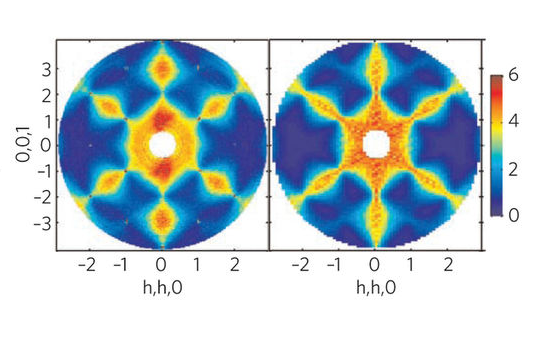Frustration in magnetism
Think about spins coupled antiferromagnetically on a triangle lattice. Consider the lower two vertices - if the spins on these sites are arranged with one 'up' and one 'down' then we minimise the energy, but what happens to the spin on the third site? There is no way we can arrange it such that it minimises the of our antiferromagnetic exchange term. When this idea is extended to more complex systems, strange properties can emerge from the condensate.
In spin ice, the magnetic rare earth ions are coupled ferromagetically, but long range dipolar forces between these ions coupled with the frustrated geometry of the pyrochlore lattice result in frustration. The ground state manifold is highly degenerate and it is possible to observe excitations from the ground state.
One of the main things we can look at is the correlation between spins in the system and we can do this using neutron scattering. The neutron is a unique probe of matter since it has no electric charge allowing us to look at the bulk properties of the material, but since it also has a spin-1/2, it is ideal for looking at the correlation between spins in the system.

Neutron scattering was used to prove the existence of a Coulomb phase in spin ice. In this phase, excitations out of the highly degenerate ground state take the form of divergences in the course-grained magnetic field, interpreted as mangetic monopoles. These fractional excitations were inferred from the broadening of so-called "pinch point" features in the diffuse scattering maps of the spin-flip and non spin-flip scattering cross sections in the (h,h,l) plane.
The interesting thing about spin ice is that is provides evidence for perfect duality between electricity and magnetism.